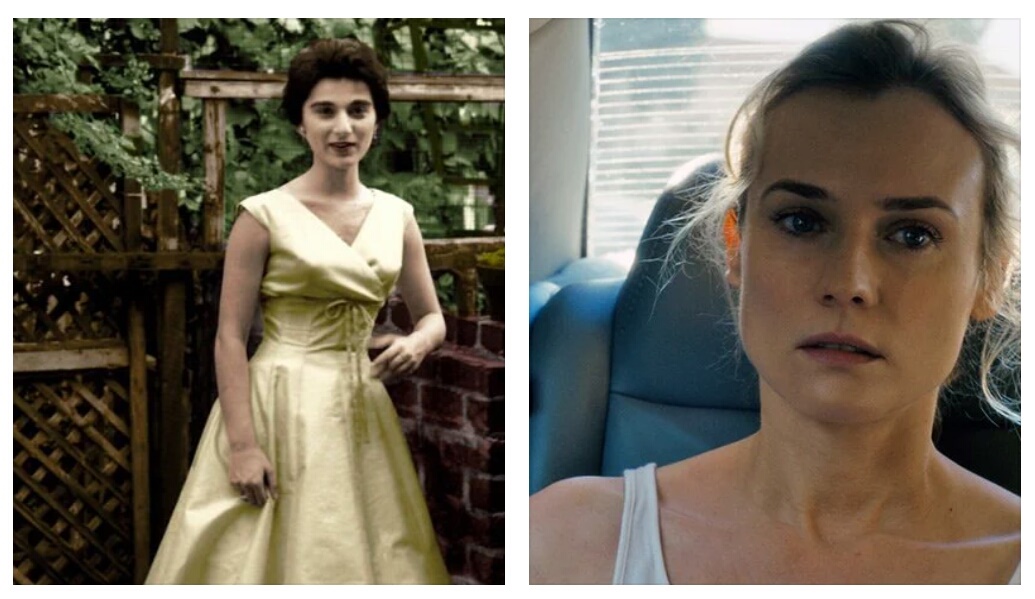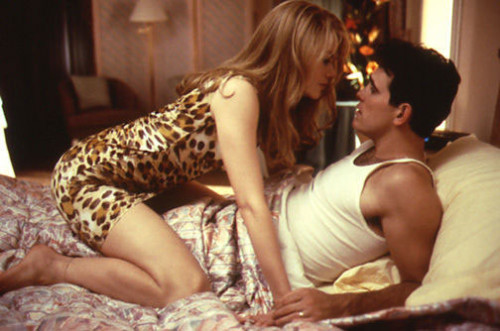Written by Ren Jender.
[Trigger Warning: discussion of explicit, fatal violence against women and rape]
You’d never know from watching movies that statistically men are much more likely to harm women than rescue them. Saving a beautiful woman from danger is such a pervasive male fantasy that right now, no matter where you are, you could probably see an example of this trope by randomly flipping through channels or wandering into a multiplex. But what if the man was never able to save the woman? Or what if he has problems of his own that keep him from being a stereotypical hero? Two new films, respectively James D. Solomon’s documentary The Witness and Alice Winocour’s French thriller Disorder, attempt to answer these questions.
The Witness tracks Bill Genovese, a Vietnam veteran and a person with an amputation who uses a wheelchair, as he tries to find out 40 to 50 years later (the film took a decade to make) what really happened the night his older sister, Kitty Genovese, was stabbed to death (and although it’s not included in the film also raped by her murderer) in front of her own Queens apartment building in 1964. Kitty Genovese’s killing became the stuff of front page headlines and sociology classes when an apocryphal story in The New York Times stated that 37 (the number was later amended to 38) of her neighbors, awakened by her screams, saw her being stabbed from their bedroom windows but none called the police or offered any other help which might have saved her life.
The truth, uncovered in more recent articles is: although neighbors heard her screams, nearly none of them knew what was going on (some thought she and her killer were a drunk married couple having an argument) especially since the scene was quiet and Kitty was out of sight for some time between her murderer’s initial attack (interrupted when a neighbor shouted at him through the window to get away from her) and when he fatally wounded her (after which a woman neighbor and friend of Kitty’s held her in her arms as she was dying).
The original news story was a manipulation of facts that made a compelling resume builder: Abe Rosenthal, who later became the long-reigning executive editor at The New York Times wrote a sensationalistic book based on the fabricated story. When Bill interviews Rosenthal, he still insists the original account was the correct one. Some other journalists who covered the story when it was still new, like the late Mike Wallace, are more philosophical. “It was a fascinating story,” he says, one that was apparently too good to let the facts get in the way.
What actually happened is more complex. One surviving neighbor Bill interviews on camera says, “I heard someone yelling, ‘Help, help,’ and I called the police,” though no records of her call are on police logs. As Bill explains to us in his narration, we don’t know if the station neglected to write down the call or if the woman is telling this story to make herself feel better about her own actions (or inaction) that night.
We also see, unlike in most narrative films, how uninterested some people are in the truth. Kitty’s killer, Winston Moseley (he has since died) who raped and killed at least one other woman and later, in an escape from prison, raped another and held hostages at gunpoint, refuses to meet with Bill and instead offers in a letter an obviously fictitious story about being framed. Moseley’s son, who was 7 at the time of the murder, is a minister who wears a shiny cross, but seems to believe another of his father’s stories (that contradicts everything we know about the case): that Kitty called him a racial slur and he snapped. The son also seems unwilling to accept that his father was responsible for the other murder (which, like Kitty’s, he confessed to after he was arrested for stealing a television) in which he set fire to his victim while she was still alive. Instead, the son states that, for years, he and the rest of family had believed that Kitty was related to the infamous New York Mafia Genoveses (she was not).
Because most of the memories of Kitty and the analysis of her death come from men, we feel a little removed from her. When one man talks about how his mother (the woman who held Kitty in her arms as she died in the hallway) often had coffee with Kitty and would “talk about whatever women talk about,” it’s as emblematic of the film’s distanced viewpoint, as the blurry, nearly faceless image we see of Kitty in clips from an old home movie which are interspersed throughout the film.
Bill is in nearly every frame of the film’s live action — most of the recreated scenes are rendered in the delicate, evocative animation of The Moth Collective. Even as we see him moving in and out of his wheelchair, wearing gloves to pull himself up the stairs to an otherwise inaccessible apartment and narrating the film, he remains something of a mystery. Why does he wait to find out the real story until 40 years after his sister died? By the time he tracks down the witnesses who testified at the trial, most are long dead. One of the only insights into his mindset comes from his wife: “The choices that he made in his life were all related to the fact that no one helped his sister.”
Bill also has a willful obtuseness when he wonders why Kitty, whom he was close to, never came out to him at a time (she died five years before Stonewall) when people who told their families they were queer were disowned. Kitty being a fairly out queer person (in a highlight, after her partner, Mary Ann Zielonko, tells Bill that the patrons at the bar where she worked didn’t know Kitty was queer, two of them tell Bill everyone at the bar knew and considered her “one of the boys”) makes me wonder if Karl Ross, one of the only witnesses who did see what was happening and was close enough to halt the murder, failed to do so because of homophobia — or a fear of police since he too may have been gay. Mary Ann says of Ross, “He knew us.” He owned the pet shop where Kitty bought a poodle for Mary Ann as an apology after an argument.
[youtube_sc url=”https://www.youtube.com/watch?v=b4irXjYt_LM”]
In Disorder, co-written and directed by Alice Winocour (the co-writer of Deniz Gamze Ergüven’s Oscar-nominated Mustang), the woman in peril is Jessie (Diane Kruger), the wife of a shady and very wealthy businessman, and her protector is a paid bodyguard, Vincent (Matthias Schoenaerts) back from a stint in Afghanistan and suffering from PTSD (as well as some hearing loss, the doctor at the beginning tells him — and us).
We see Vincent try to do work as he deals with the sounds (all the electronic beeps and boops of modern life) and sights that trigger him. Wariness is actually part of his job description, but at first we’re unsure if Vincent’s has more to do with his internal struggles than it does with anything going on around him. Silly us: this film is a thriller. Of course the main guy’s paranoia is justified.
The film manages to squeeze a surprising amount of tension out of a not-terribly-original situation before its first violent incident (which is punctuated, stunningly, by a cracked windshield and a brief blackout) but falls apart soon afterward. The film has lots of overheard conversations and pieces of information that never really come together in coherent form, which might reflect what a paid protector would overhear and understand but doesn’t really engage the audience. The violent aggressors are the opposite of a menace in their cute, black, ninja outfits and masks. No matter what Vincent’s skills as a fighter (never impaired by psychological problems so obvious that Jessie asks his coworker directly, “What’s wrong with him?”) always flatten them, so the action becomes monotonous.
Winocour’s film was apparently influenced by her suffering PTSD from a traumatic childbirth experience (she and her daughter are fine now), a phenomenon women I’ve known have also experienced, but something I have never seen captured on film. I desperately wished Disorder was about women’s trauma instead of the tired cliché of a male soldier’s suffering. The film also doesn’t give us any insight into Jessie’s point of view. She looks great in the backless floral evening dress she wears to a party early in the film, but in every scene she is so much an object she might as well be tied in pink ribbon. This lack of attention to the character is especially shocking and disappointing because Winocour co-wrote Mustang, an instant feminist classic that is flawlessly attuned to its girl protagonists.
Additionally the husband and his cohorts are all from the Middle East: the only person of Middle-Eastern descent who doesn’t seem sinister is Ali, Jessie’s Keane-eyed, curly-haired, young son. France’s traditional anti-Arab sentiment and more recent anti-Muslim policies (on the same beaches where Jessie and Ali frolic) make the ethnicity of the bad guys seem not strictly coincidental and more than a little racist. Skip this film and see Mustang (again) instead.
[youtube_sc url=”https://www.youtube.com/watch?v=WMThvaCTAm0″]
Ren Jender is a queer writer-performer/producer putting a film together. Her writing. besides appearing on Bitch Flicks, has also been published in The Toast, RH Reality Check, xoJane and the Feminist Wire. You can follow her on Twitter @renjender.










